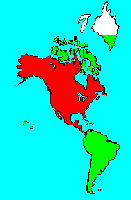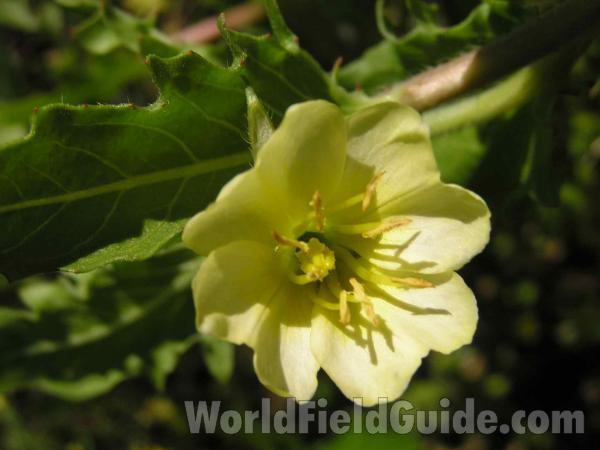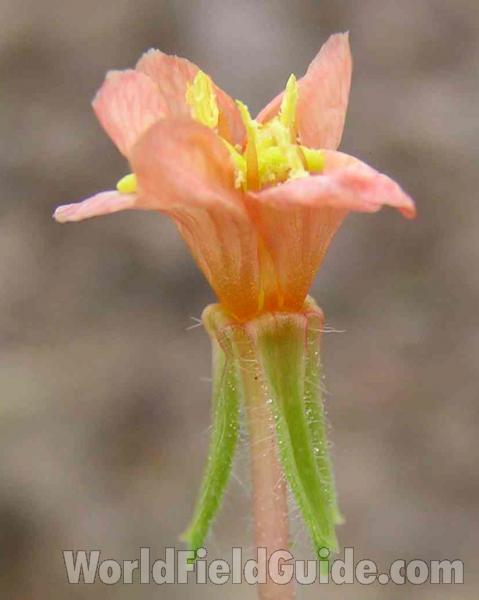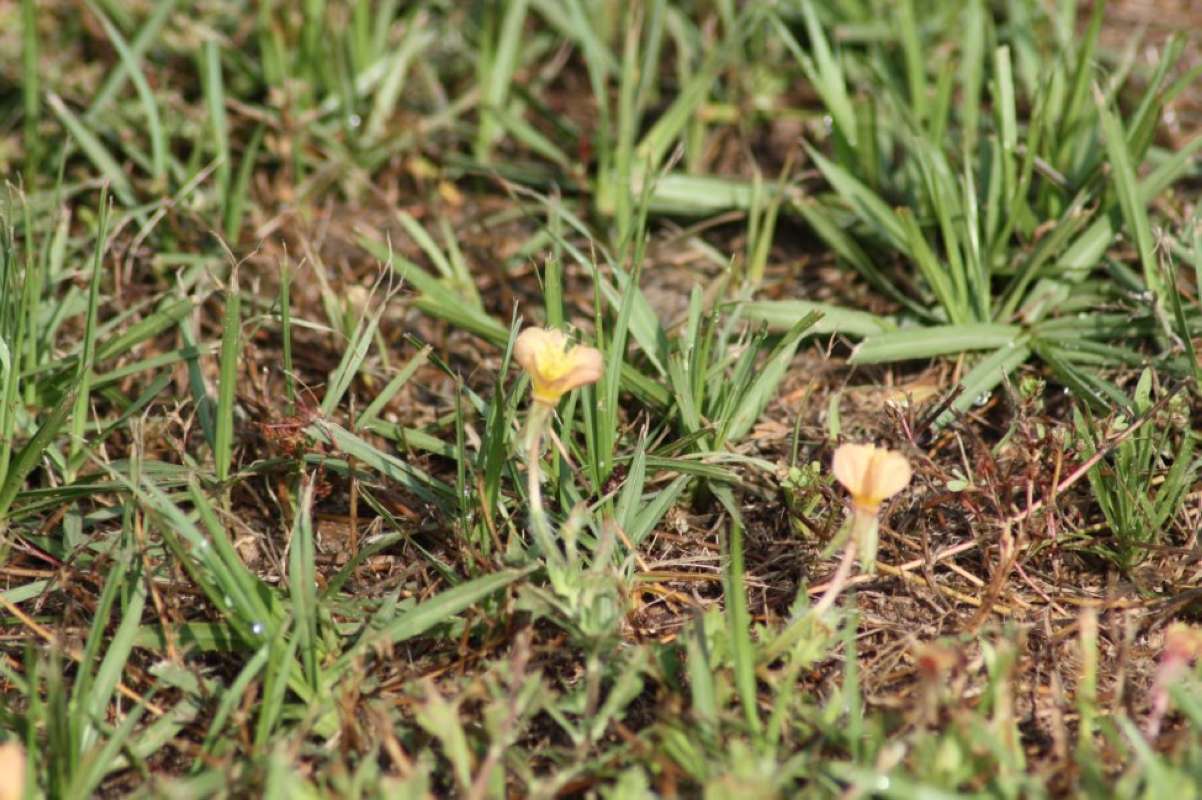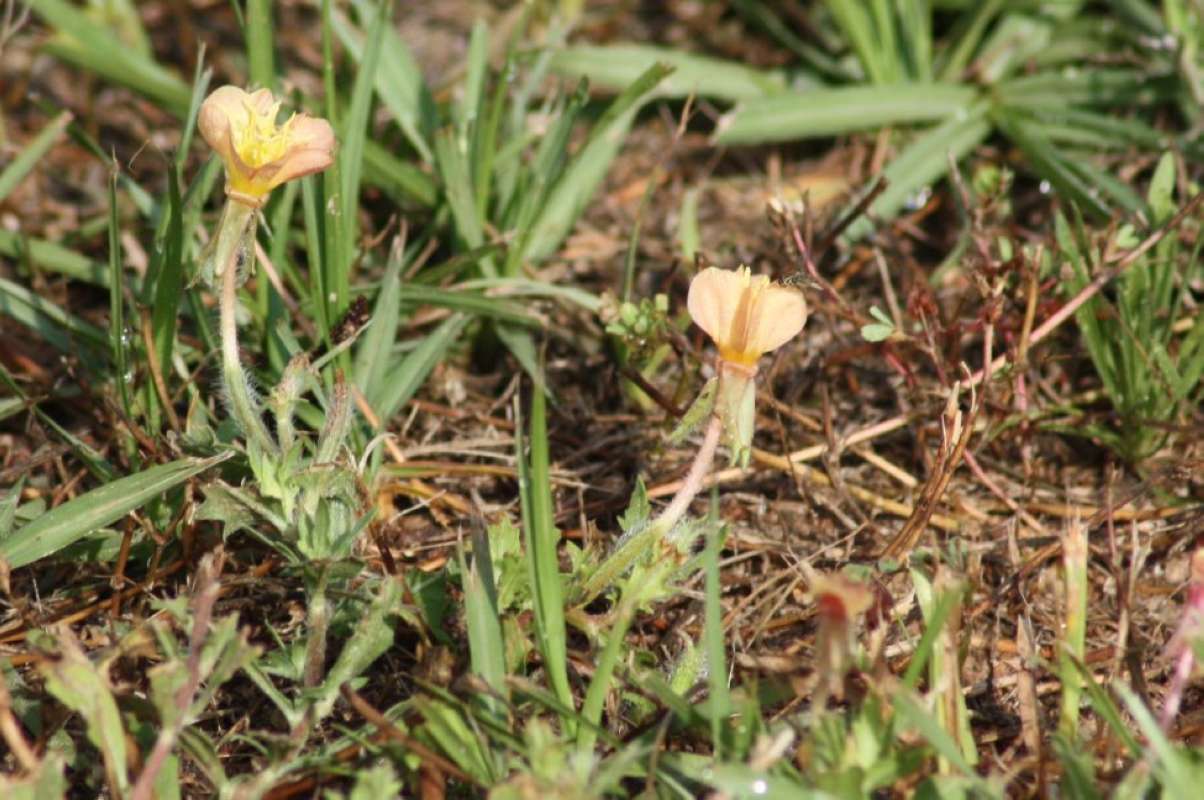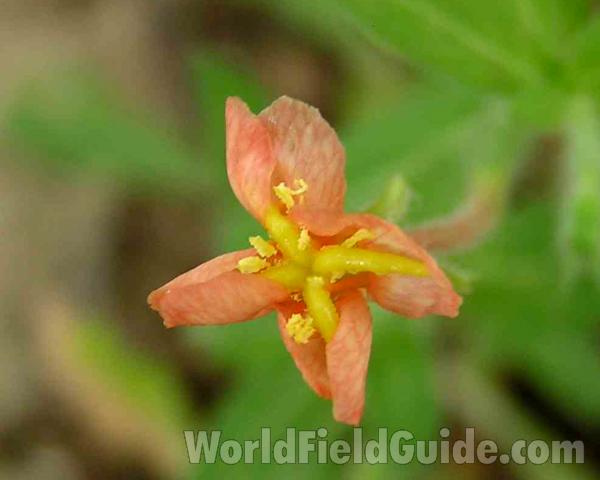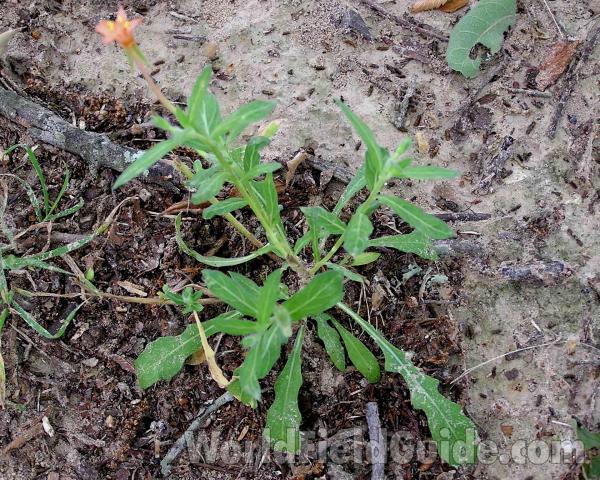SPECIES INFO
Cut leaved evening primrose (Raimannia laciniata to Oenothera laciniata) is found in sandy dry soil from New Jersey west to South Dakota, and south to Florida, Texas, and Mexico and even into South America. This plant is normally less than two feet tall. The leaves are somewhat lanceolate and sinuate-dentate or often pinnatifid. The yellow flowers have four petals.Oenothera genus (evening primrose) is native to the New World, but many species are now established in the Old World. There are about 125 species of annual, biennial, and perennial herbs in this genus. The flower tube is cylindrical and flares into four petals. The stigma usually ends in an obvious "X." There are 64 species and 33 named subspecies growing in greater North America. (The Raimannia have been merged into this genus.)
Evening Primrose Family (Onagraceae) contains over 650 species of which most are non-woody. Although the petals can be 2-9, most species have four petals. The family is worldwide in distribution. There are 277 species now growing in greater North America.
Myrtiflorae Order is an assemblage of over twenty different families.
Dicots (Dicotyledoneae Class) are the predominant group of vascular plants on earth. With the exception of the grasses (Monocots) and the Conifers (Gymnosperms), most of the larger plants that one encounters are Dicots. Dicots are characterized by having a seed with two outer shell coverings.
Some of the more primitive Dicots are the typical hardwood trees (oaks, birches, hickories, etc). The more advanced Dicots include many of the Composite (Aster) Family flowers like the Dandelion, Aster, Thistles, and Sunflowers. Although many Monocots reach a very high degree of specialization, most botanists feel that the Dicots represent the most advanced group of plants.
Seed plants (Phylum Embryophyta) are generally grouped into one large phylum containing three major classes: the Gymnosperms, the Monocots, and the Dicots. (Some scientists separate the Gymnosperms into a separate phylum and refer to the remaining plants as flowering plants or Angiospermae.)
For North American counts of the number of species in each genus and family, the primary reference has been John T. Kartesz, author of A Synonymized Checklist of the Vascular Flora of the United States, Canada, and Greenland (1994). The geographical scope of his lists include, as part of greater North America, Hawaii, Alaska, Greenland, Puerto Rico, and the Virgin Islands.
Kartesz lists 21,757 species of vascular plants comprising the ferns, gymnosperms and flowering plants as being found in greater North America (including Alaska, Hawaii, Greenland, Puerto Rico and the Virgin Islands.
There are estimates within the scientific world that about half of the listed North American seed plants were originally native with the balance being comprised of Eurasian and tropical plants that have become established.
Plant kingdom contains a large variety of different organisms including mosses, ferns, and seed plants. Most plants manufacture their energy from sunlight and water. Identification of many species is difficult in that most individual plants have characteristics that have variables based on soil moisture, soil chemistry, and sunlight.
Because of the difficulty in learning and identifying different plant groups, specialists have emerged that study only a limited group of plants. These specialists revise the taxonomy and give us detailed descriptions and ranges of the various species. Their results are published in technical journals and written with highly specialized words that apply to a specific group.
On the other hand, there are the nature publishers. These people and companies undertake the challenging task of trying to provide easy to use pictures and descriptions to identify those species.
